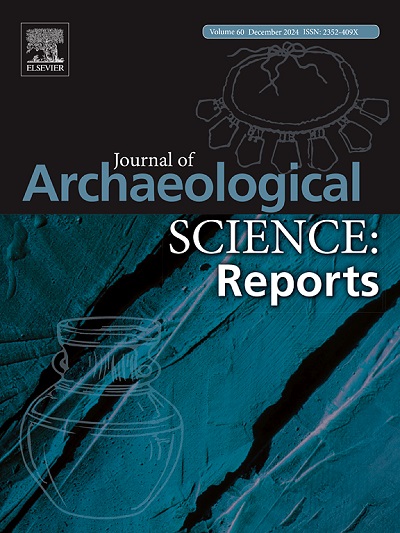反射变换成像技术在巴拉那河下游(阿根廷)考古陶瓷中的应用
IF 1.5
2区 历史学
0 ARCHAEOLOGY
引用次数: 0
摘要
本文旨在通过反射变换成像(RTI)技术的应用,加深对阿根廷巴拉那河下游地区前西班牙时期陶瓷生产技术过程的了解。这种计算立体光度法可以在不同的光照方向下记录物体的表面浮雕。通过这种方法,直接观察或标准摄影无法看到的裂缝、浮雕变化和小孔等细节都可以显现出来。这项技术应用于从 Cerro de las Pajas Blancas 1 和 La Calavera(圣塔菲省圣赫罗尼莫省)考古遗址中发掘的两件陶瓷器。在第一个遗址中,我们分析了一个使用拖拽技术制作的图案;在第二个遗址中,我们研究了一个内部有网状印记的器物。一方面,在记录和分析应用于陶瓷表面的不同技术方面,建议使用 RTI 提供比标准数字摄影更多的信息。另一方面,RTI 继续证明了其作为考古文物研究工具的价值,因为它有效、非侵入性、成本效益高,并且无需对文物进行物理操作即可创建永久性的互动记录。本文章由计算机程序翻译,如有差异,请以英文原文为准。
Application of reflectance transformation imaging to archaeological ceramics from the lower Paraná River (Argentina)
The aim of this paper is to advance the understanding of the technological processes behind pre-Hispanic ceramic production in the Lower Paraná River (Argentina) through the application of Reflectance Transformation Imaging (RTI). This computational stereo-photometric method allows the surface relief of objects to be recorded under different illumination directions. In this way, details such as cracks, changes in relief and small holes that are not visible by direct observation or standard photography can be revealed. This technique was applied to two ceramic objects recovered from the archaeological sites Cerro de las Pajas Blancas 1 and La Calavera (San Jerónimo department, Santa Fe province). From the first site, a motif made using the drag and jab technique was analyzed, and from the second site, a piece exhibiting a net imprint on its interior was studied. It is proposed, on the one hand, that RTI provides more information than standard digital photography for the documentation and analysis of different techniques applied to ceramic surfaces. On the other hand, RTI continues to demonstrate its value as a tool for studying archaeological artefacts, as it is effective, non-invasive, cost-efficient, and creates a permanent interactive record without the need for physical manipulation of the artefact.
求助全文
通过发布文献求助,成功后即可免费获取论文全文。
去求助
来源期刊

Journal of Archaeological Science-Reports
ARCHAEOLOGY-
CiteScore
3.10
自引率
12.50%
发文量
405
期刊介绍:
Journal of Archaeological Science: Reports is aimed at archaeologists and scientists engaged with the application of scientific techniques and methodologies to all areas of archaeology. The journal focuses on the results of the application of scientific methods to archaeological problems and debates. It will provide a forum for reviews and scientific debate of issues in scientific archaeology and their impact in the wider subject. Journal of Archaeological Science: Reports will publish papers of excellent archaeological science, with regional or wider interest. This will include case studies, reviews and short papers where an established scientific technique sheds light on archaeological questions and debates.
 求助内容:
求助内容: 应助结果提醒方式:
应助结果提醒方式:


